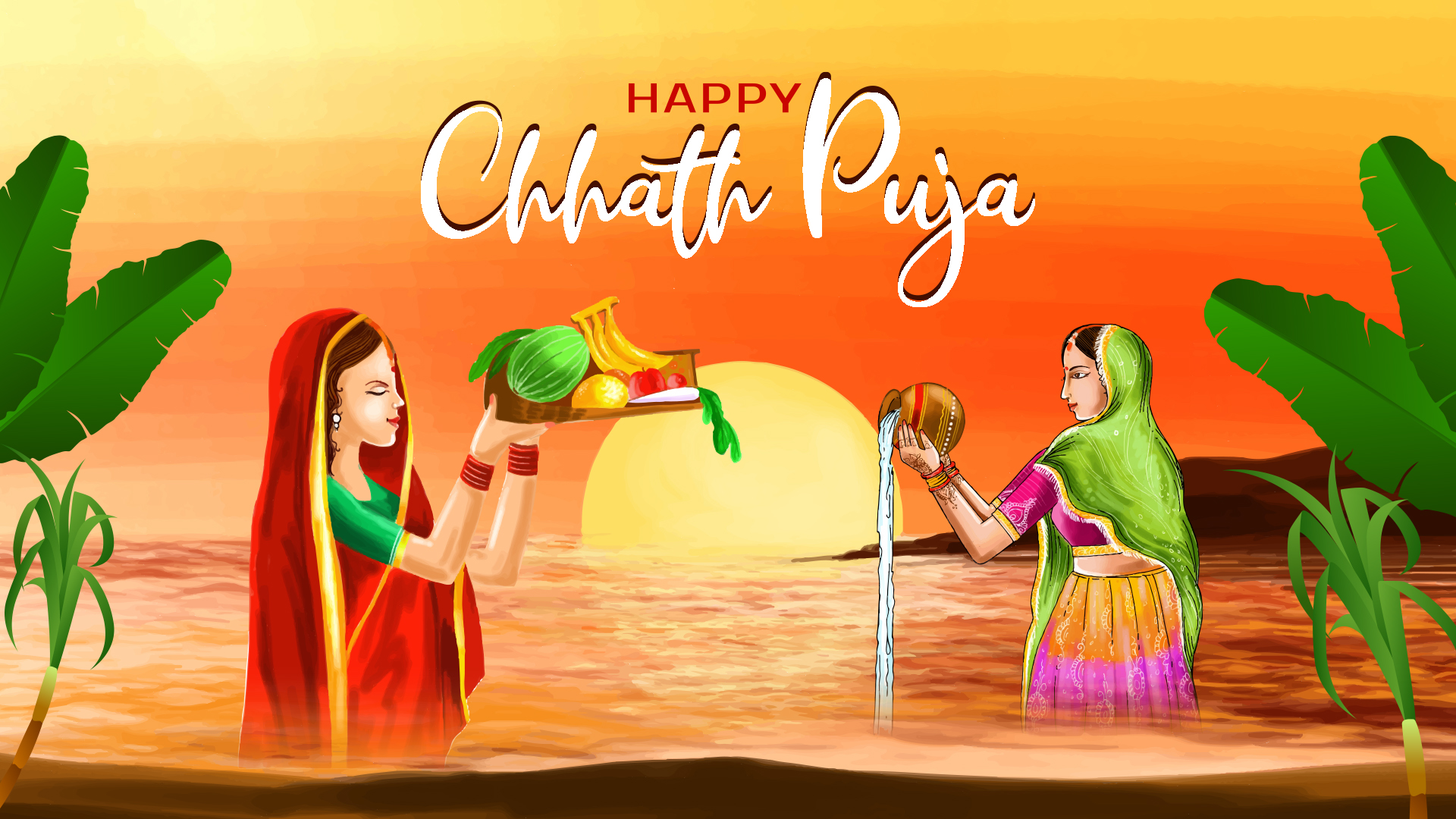
The pre-winter festival that comes around just days after Deepawali is steeped in ancient mythology and is dedicated to the Sun God, Surya Dev, and Chhathi Maiya. Scores of devotees indulge in prayers and celebration for Chhath Puja, gathering at water bodies at specific auspicious times of the day – chiefly, sunrise and sunset. For most of us in the state of West Bengal, it has come to signify an important 4-day long festivity that culminates with delicious eats. Over the years, our friends from the adjoining states of Bihar, Jharkhand, and eastern Uttar Pradesh have come to occupy an intrinsic part in the fabric of the state, seamlessly assimilating themselves in all walks of life. Look around a bit and you will probably find some as your extended family as well, for many inter-state marriages abound among millennials and the Gen Z.
Needless to say, in West Bengal, Chhath Puja is one big celebration for us and it is not uncommon to book your portion of Chhath Puja Prasad much ahead of the festival with your friendly neighbour, friend, or team-mate.
Have you been lucky enough to accompany a band of devotees for Chhath Puja? Surely, you must have seen some images. They create a powerful statement in a single frame – an expanse of water, the sun, women across ages with offerings. Think about it and you realize that this vibrant Puja brings together some pivotal elements that ensure our very existence – the sun, water, the female gender, and food to sustain us. In a broader sense, it is about family ties and the importance of women folk, gratitude for food and water, and Mother Nature that nurtures us. Collective existence and sustainability decoded so simply.
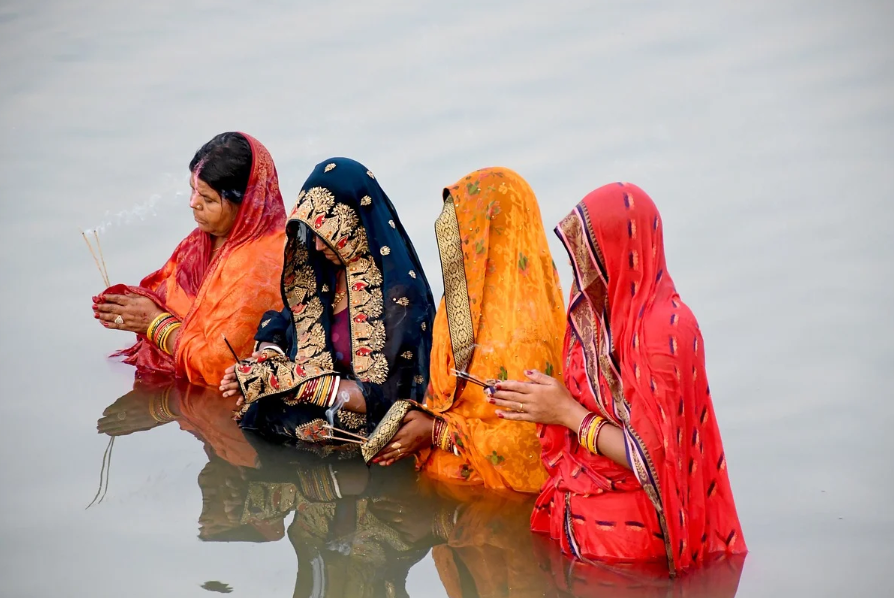
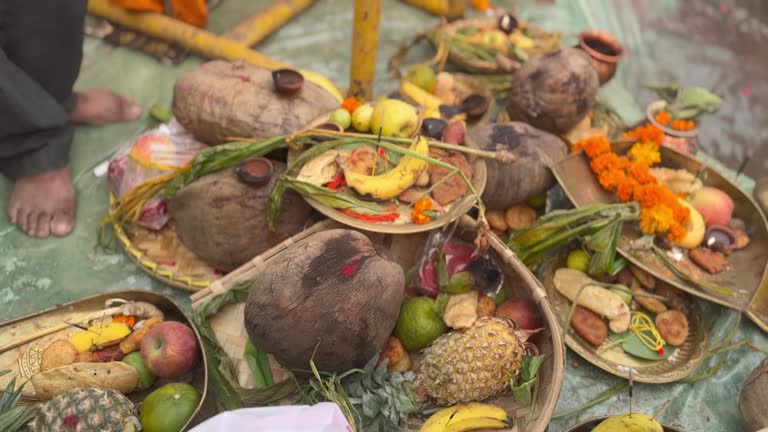
The lustrous fabric of the four-day spiritual festival is woven with the beautiful skein of ritualism fostering cultural heritage and community feeling among devotees in all parts of the world.
Deep Mythological Significance
An ancient Hindu festival, Chhath Puja is dedicated to the worship of Surya Dev and Chhathi Maiya (a manifestation of Shashthi Devi). Each year, the festival is widely celebrated in the states of Bihar, Jharkhand, eastern Uttar Pradesh, and in parts of Nepal as well, especially in the Mithila region.
1. The Pandavas: As per legend, Chhath Puja was first performed by Draupadi and the Pandavas during their exile. The great sage Dhaumya himself guided Draupadi to perform the rituals and it is believed that these prayers helped them overcome the tough challenges and regain their lost kingdom.
2. Sun Worship as mentioned in the Rigveda: The worship of sun has roots in the Rigveda, one of the oldest sacred texts of Hinduism, wherein hymns are dedicated to the Sun as the source of all power. In fact, the Gayatri Mantra, one of the most significant Vedic hymns, is dedicated to Surya Dev and is an invocation for wisdom and spiritual strength.
3. Lord Rama: In yet another legend, Lord Rama and Sita are said to have observed Chhath Puja together as a couple upon their return to Ayodhya after spending 14 years in exile which also included Rama’s victory over Ravana. Rama and Sita offered prayers to Surya Dev as a token of gratitude, and this practice is believed to be the precursor to Chhath Puja.
4. Karna: Chhath Puja also has connections to the valiant Karna, who was the son of Surya and Kunti. Karna is believed to have been a devout worshipper of Surya Dev from whom he derived his invincible strength. His daily prayers to Sun God are believed to have imparted him his remarkable resilience and power. It is believed that his sincere and unwavering worship to the Sun God have contributed to the origins of Chhath Puja as a way of paying homage to Surya Dev.
5.Shashthi Devi (Chhathi Maiya): Chhathi Maiya, also known as Shashthi Devi in many places, is the goddess of fertility and children. She is the goddess protector of progeny and is naturally worshipped ardently by all Hindu believer- mothers. According to Hindu mythology, she protects children and blessed them with good health, happiness, and prosperity. During Chhath, women pray to Chhathi Maiya for the well-being of their children and for fertility blessings.
Rituals Observed
Chhath Puja is observed over four days which sees devotees performing specific rituals across each day with faith and devotion. Here’s the brief list –
- Nahaye Khayae
- Kharna
- Sandhya Arghya
- Usha Arghya or Parana
Special Offerings
The Puja commences with devotees partaking Kadu- Bhaath after Nahayae Khayae in which they take the holy bath at the crack of dawn, say their prayers after offering water (Jal Chadana).
Thekua, which young city-dwellers may associate with a cookie, is a delicious baked sweet that is made of atta (unrefined wheat flour), sugar or jaggery, ghee, mashed ripe bananas and fruits like diced coconut. Thekua, the quintessential Prasad component of Chhath Puja, is offered to Surya Dev and Chhathi Maiya along with whole coconuts, bananas, whole sugarcane, seasonal fruits and vegetables, Kasar (a kind of roasted rice flour mixed with jaggery) – altogether a wholesome, delicious platter that is distributed amongst devotees after the offerings have been made.
Good to Know
There are two Chhath celebrations in a single year. Known as the Kartik Chhath and Chaiti Chhath, the two Chhaths are observed at different times of the year, although way they are celebrated is much the same. Typically held in the months of March and April, Chaiti Chhath is celebrated on the day of Shukla Paksha Shashthi in Chaitra month. It is observed during Chaitra Navratri. The celebration is also known as Yamuna Chhath by some devotees as it is believed that the river Yamuna descended to the Earth on this day. Accordingly, it signifies the birth of Goddess Yamuna or Yamuna Jayanti. Kartik Chhath comes after Diwali and is celebrated with much glory and festivities while the former is usually a much-subdued affair.
They Shared Their Chhath Puja Memories
- Flora Saini, Actor and Model – My best wishes for a wonderful and happy Chhath Puja to everyone! Although I don’t hail from this region, I have spent considerable time here and more than familiar than the celebratory mood of the festival. I belong to the Defence background and even as a child, I stayed for good lengths of time in the eastern part of the country. So, I am well acquainted with the wonderful atmosphere that prevails during Chhath Puja.
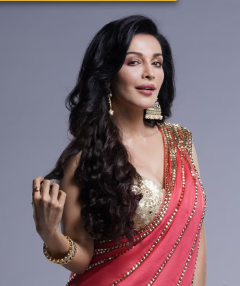
- Misti Yadav, Influencer – Chhath Puja Greetings to all of you! As a Bihari, I have very fond memories of Chhath Puja. Even as a child, I would get busy assisting Mummy and my grandmom preparing the items of Prasad. I remember going to Ganga Ghat with the grown-ups for Sandhya Arghya when the sun went down as well as waking up before dawn and accompanying them for the Usha Arghya Puja. Plus, the non-stop fun with my cousins. And, who can forget the Prasad that was handed out to the kids once the fast was over? Pure happiness!
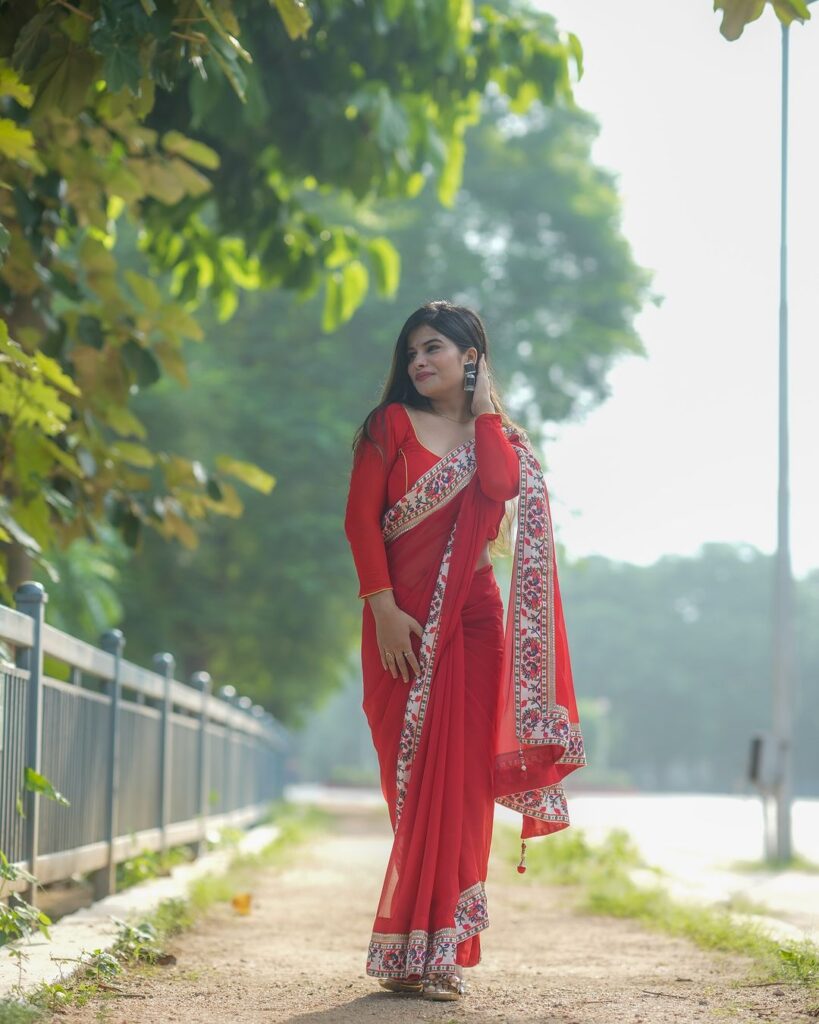
Picture taken by : iStoke, Pixabay

Leave a Reply